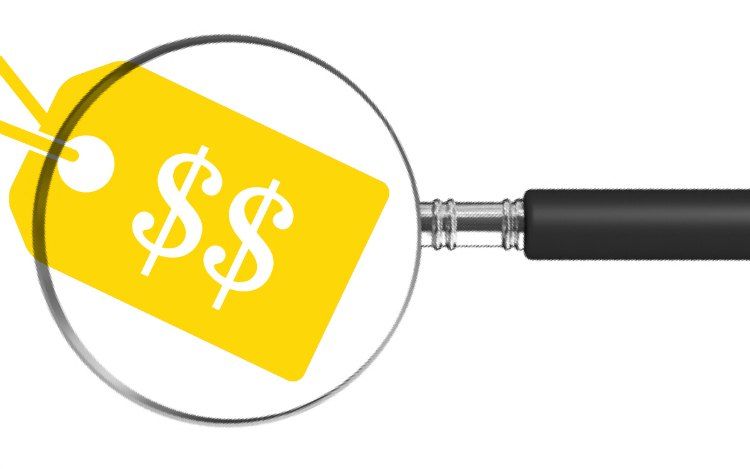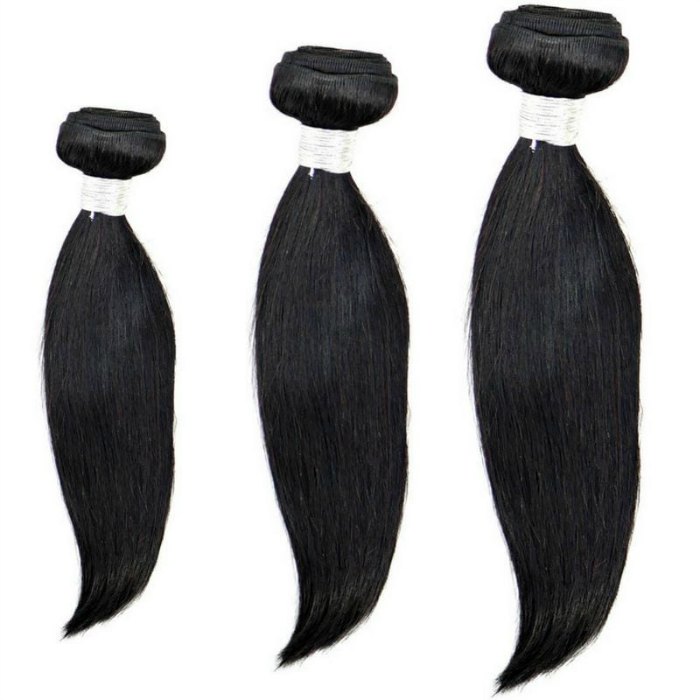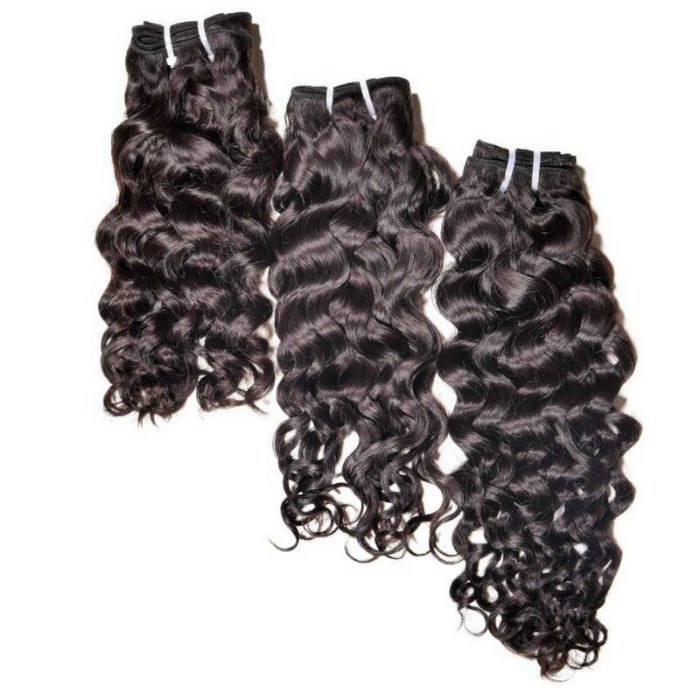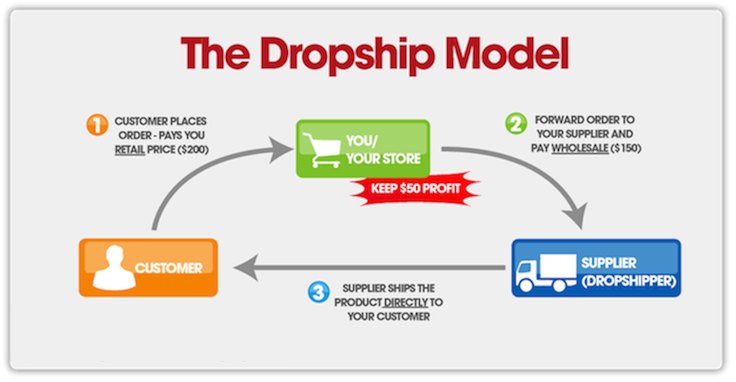Believe it or not, the price of your product is one of the most important factors of your business.
It impacts almost everything, and it decides how much money you’re going profit and take home. Not only that, it dictates how much money you can spend to reinvest in your business otherwise known as cash flow, profit margin, and expenses.
This is why we completely understand your struggle when pricing the hair products and extensions on your website.
When you’re starting a new business from scratch, it is easy to get stuck on how much you’ll be selling your merchandise for.
However, we don’t want you to get stuck and spin your wheels to the point of delaying your launch. We want to provide you with the research, resources, and tools to get real data.
This will help you get the pricing information that you need and feel comfortable using!
The Question: How Should I Price My Hair Extensions?
One of the most common questions that we get at the Dropship Bundles service desk is: How much should I charge?

As a seller, you are trying to profit. You want to price your hair so that you can not only make your investment back but take home a little profit too.
However, most of you also wear the product that you sell as well. Because of this, you know what price someone is going to pay for hair extensions vs. the price that is going to make someone exit your website altogether.
Your job as a retailer is to avoid the latter by any means necessary.
The Answer: However You Want
The biggest misconception when it comes to pricing is that you can only price your products one time. That is absolutely not true.
A lot of retailers in traditional markets like clothing or home goods will markup their products 200% for the first week. Then they bring the price down to half of that and sell their product at a promotional price.
As a result, customers think that they’re getting a deal. In all actuality, the retailer knew that they were going to change the amount of the product as soon as they put it on the floor. It just looks better to the target audience with a markdown sticker on it.
This successful strategy proves your first price does not have to be the end-all-be-all.
An excellent way to calculate how you should set your first price would be to add up everything that it costs to sell your hair, lashes, or edge control. Then put your profit margin on top of all of that.
Get it? Keep reading to see how!
Tip 1: Know your COGS
If you are selling a bundle deal of Malaysian Bodywave hair, lengths 12”/14”/16” you need to calculate every product that goes into that bundle deal. This helps you to make your foundation for your retail price.
Doing this, you are calculating your cost of goods sold for a bundle deal. And because you’re going to be ordering your products from a wholesaler that is pretty easy to calculate. Start by adding together the wholesale cost for each length.
Sidebar, if your hair extension business also sells some homemade pomade or hair oil, then you’re going to have to take a closer look into what you’re spending to make that product in order calculate your COGS. You have to look at the raw materials you’re purchasing before you can know what your cost of goods sold is.
Knowing the price that you’re going to have to pay on each order going out is the best way to start the pricing process.
Tip 2: Add Up Your Variable & Fixed Costs
When calculating your costs not only do you need to look at your COGS but you also need to look at all of the factors that go into getting that hair out of the door.
If those things increase with the amount of hair going to one customer, for instance, the number of silk bags you are putting in one shipping envelope then that factor is a variable.
If the factor is concrete like the hosting of your website or rent of your brick and motor and is due whether you sell an item or not, consider that item “fixed.”
Note that in the example below I did include the difference for shipping when you are a Dropship member. There is a line for how much your packaging could cost per order, and I broke down the daily hosting cost of your website from month to month.
Incorporate all of this into your pricing basis.
Variable Costs 12” Malaysian Bundle $26.99
14” Malaysian Bundle $31.99
16” Malaysian Bundle $37.99
Shipping $2.00
Packaging ($175/100 bags) $1.75
Fixed Cost Hosting Price ($19.99/30 days) .67
=
Total cost per order $101.39
The total is the price you are paying for the hair from your wholesaler.

Tip 3: Add Profit Margin
Now tack on your desired profit. To do this, you have to decide on how much of a profit you would like to make from each of your orders.
If you have a 25% profit margin, you will take the amount of money you typically spend and multiply that by 25%.
$101.39 * 0.25 = $25.34
Add $25.34 to the $101.39 and your customer will pay 126.74. You will take home $25.34.
It is vital that you don’t arbitrarily pick a percentage for your profit margin. Decide on that percentage after shopping the competition.
Look at the hair industry as a whole. If your profit margin percentage keeps you in a good range of market pricing for hair in comparison to your competitors, you are in a good space.
If your price is two or three times more than your competitors, then you may want to consider how your consumer may react and re-evaluate your pricing.
Nevertheless, keep in mind hair can be placed at different spaces in the market if you are an influencer or your brand is considered upscale you may be able to get away with a higher price point.
Tip 4: Test It
Now, this is where the fun part comes in!
Just because you set your price one time does not mean that it is going to work. You could go too high and no one responds to the price that you’ve been able to put together, or you could go too low and lose money as each order goes out.
Pricing is always going to change, whether it be a seasonal change, you’re knocking things down, or you’re getting new inventory it’s still going to be something that moves and grows with your business.
As long as your price covers your expenses and you can make a little money from it, keep testing the price. Go up or down depending on how your target market is responding.
Once you’ve tested enough you’ll automatically know what you’re customer will respond to and how they view your product as far as quality. Remember this pricing is important because it’s going to be what goes back into your brand to fund your business.
Once you have a continuous flow of money to help you grow your ideas, you can launch different product types, more expensive product, or different stores and ancillary businesses to grow your brand as a whole.
Pricing Strategies

One for sure way to test your pricing is to move your pricing along a pricing strategy scale. Again, remember you have to experiment.
A lot of these strategies are going to impact how customers see your brand. You’re going to want customers to look at your brand in different ways depending on how you’re feeling and the type of customer that you want to attract.
Make the best decision for you and your bottom line. Keep in mind that if you have a product assortment that can provide a wide range of quality you are in a winning position to cover all price points.
Take advantage of that by using a combination of the pricing strategies listed below throughout the life of your hair business.
MSRP
MSRP stands for Manufacturer’s Suggested Retail Pricing. It is also known as the list price, sticker price, or recommended retail price.
This pricing system is the easiest to use because it is pre-done for you. All you have to do is mirror your pricing to match the who you are buying your product from.
Manufactures created this system to develop standard pricing across the board. That is why we offer a suggested price to the businesses that we help develop.
Yes, you read that correctly, Dropship bundles offer retail pricing suggestions to its customers.
You are not obligated to use this pricing, but it is a great tool to use when deciding if you want to go over or under that pricing. You can then base your pricing decisions on the average price that other hair extension businesses are using.
Get our price list here.
Keystone
The Keystone markup method is pretty simple. You’re just doubling the cost of the item and using that as its retail price.
A lot of retailers use this as a rule of thumb when it comes to pricing their product, but there are some instances where doubling the cost of the item can position the product at a price too low and or two high depending on the market and the quality of the product.
For example, you can price your product too low using the Keystone method if it’s something that is rare, unique, or if the shipping amount is out of this world. These factors can cause you possibly lose money using the keystone method.
However, on the flip side of that, if your product is everywhere and it’s easier for your target market to get their hands on it, Keystone may leave your product at a price that is too high in comparison to your competitors.
If your hair business is selling edge control that is a perfect product to study before deciding if you’re going to use a keystone markup. If you are paying $7 or $8 for a large 4oz jar of edge control, you should go out into the market and look to see what your competitors are selling their products for.
A lot of people may have a problem with paying $14 to $16 for that product when different gels and balms do the same thing for a lot cheaper.
Multiple Pricing Strategy
The idea of multiple pricing is ingenious when you think about it. It gives your customer the sense of perceived value at a lower cost.
Multiple pricing occurs when a business decides to sell products together, also known as product bundling. In the case of your hair extension business, you would consider bundle deals your multiple pricing option.
Having this available to customers give them the opportunity to buy all the hair that they need at one time without having to click individual bundles. You can also sell more volume that way!
Think about it, a lot of people tend to purchase two bundles of hair when looking at hair extensions under 18 inches, but if you have it already presented to them as an option to buy a 12 inch 14 inch and 16 inch bundle deal with the click of a button, they’re going to do that.
And you’ve made a little extra money and sold an additional bundle in the process.
Discount Pricing
When it comes to shopping, I love nothing more than a good deal! The right product at the right price will get me giddy with anticipation of using the product and coming back to the store.
This is the reason why a lot of retailers use the discount method of pricing.

Anything that has to do with marking the price down being a coupon, a red tag sale, or some sort of flash promotion will get people who feel like me into their store. Realize it is best to use the discount pricing option when you want to increase traffic.
If we are talking about an online store alone, a significant discount promotion can increase website views tremendously.
However, you have to be careful because if you put too much product on sale too frequently, customers may start to look at you like a bargain or discount retailer. If that’s not what you’re going for that could be problematic.
We suggest using this pricing strategy when you have a lot of products that you have over ordered, or you notice that Dropship Bundles has a sale because then you can present a product to your customer at a discounted rate.
A lot of you may be thinking well, I’m dropshipping so I won’t have any on hand, but if you are one of those customers who decided to carry a lot of inventory on hand and you see slow sales, you can mark that merchandise down.
For example, you may be a drop shipper, but you decided that for the summer months of June, July, and August you would carry a lot of curly hair. So you bought Deep Wave, Spanish Wave, and Kinky Curly hair to have on hand.
If it’s now October and you have a ton of kinky curly hair left, mark that down, and next year you will know not to buy so much Kinky-Curly upfront.
Loss-Leading Pricing
Loss Leading is very similar to upselling. But you’re doing it without having a pushy sales associate to advocate for you.
If you have ever experienced walking into a store that is selling two for one tank tops and you end up buying the tanks and the jeans that are next to the tanks, you have been a victim of loss-leading pricing.
It’s all about pricing a popular or in-demand item at a super low price. Do this in hopes of your customers to snag some other things on your site while they’re in the shopping mood.
Note that using this strategy you face the same issues here that you do with discount pricing. If you participate in loss-leading pricing too much, you could end up taking the role of a bargain retailer.
However, you’re really benefiting a lot when you can master when to use lost leading pricing. You get a significant increase in sales per customer when you consider how much you’re selling.
Psychological

Psychological pricing is less of a pricing strategy and a more of a mindset. The theory behind psychological pricing is that some prices affect customers more than others.
A prominent example of psychological pricing is the .99 tactic that a lot of stores use instead of rounding their price up to the nearest dollar. The technical term for this strategy is “the left digit effect” $2.99 seems so much cheaper than $3.00 because two is less than three.
Our minds do not register the other digits, which is also why a lot of companies will promote pricing with the cents in a smaller font.
Another example of a psychological pricing strategy is BOGO or buy one get one. The customer is so focused on getting the one item free that they don’t pay attention to the price of the one product that they are spending money on.
What you’re able to master psychological pricing you are tapping into your customer’s brain. You are getting them to forget all reasoning so that they blindly buy your product.
Obviously, this could benefit you in a lot of ways, however, please be careful with this. If you are a luxury brand and you’re trying to sell high-end beauty your products to be perceived as cheap if you use something like the .99 tactic, and that can hurt your brand image.
Below Your Competition
This is where competitive shopping comes into play!
The name of this pricing strategy is the direction as well. Price your products below what your direct competitors in the vicinity around you or in the cyber world around you are pricing their products. To do this, you may have to be willing to sacrifice margin; keep that in mind.
Above Your Competition

This is the opposite of pricing your product below your competition. And honestly, this pricing strategy works.
Think, Starbucks vs. Dunkin Donuts. If you’re able to brand your company as selling opulence, luxury, and a certain amount of exclusivity you can get away with almost anything.
The only thing you have to be mindful of is people finding out if they can buy your exact product somewhere else. And even the effects of that depends on who your target customer is.
Think about it if your target market, who is a young woman between the ages of 24 and 32 can find your product cheaper somewhere else, and they’re really conscious of their budget then they probably will do that.
But if your customer can afford to spend the extra money on hair, lashes, and edge control, they probably won’t mind a high price point because they are associating themselves with a premium brand.
Anchor Pricing
An anchor pricing strategy is one of the policies that you can use throughout your business at all times.

Practice it by writing down both a sale price and the actual price of the item on your ticket. It enables your consumers to see how much they’re actually saving.
Do this by putting a line through your original price and showing your sale price in red. This is a tactic that you can use throughout the sale section of your hair extension business, if you wanted to take a couple of dollars off your bundle deals, or if you’re running some promotion.
It really will help your customers to see how much they are saving and give them the extra motivation when they need to add things to their cart.
Be mindful of making your anchor price or the original price before the sale ticket too unrealistic. Customers will notice that from a mile away.
Put in the Work. You’ll Find Your Sweet Spot.
So if you’ve already tried researching a pricing strategy you’ve probably looked at a whole bunch of other hair extension websites to see what they are charging.
You may have looked at a couple of hair magazines and gone to a local hair store to see what they’re charging, and by now your head probably hurts. There are a few relatively quick ways that you can get started with your road to perfect pricing.
You do not have to get this right on the first try. And remember that the price of a product not only impacts your finances, but it also communicates to your customer where your hair extensions are in the market.
We are always here to help. Don’t forget to check out our price list with suggested retail prices on the far right of the price list PDF file.
Drop a comment below if you have any questions about the price list provided or the strategies we’ve discussed here!



